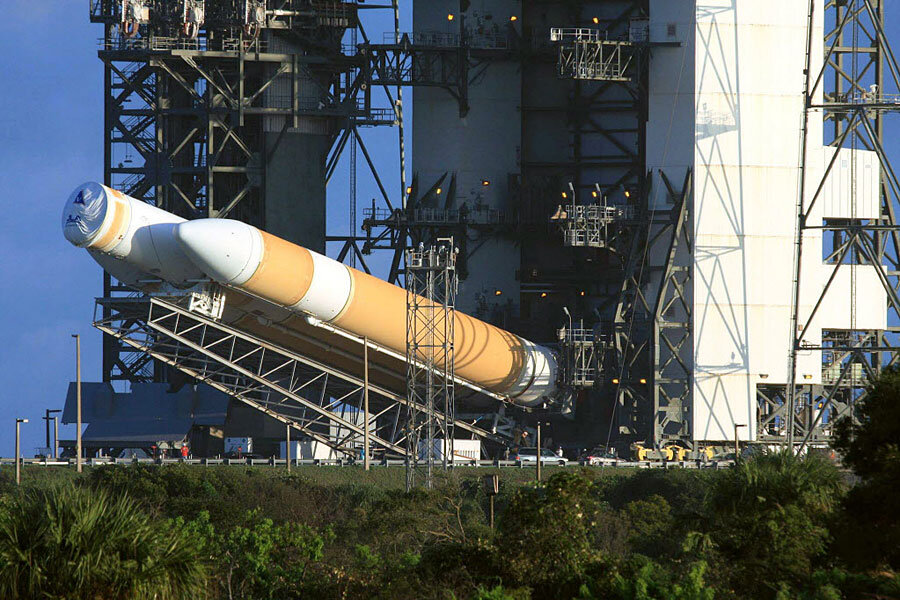Why do we love leaving our mark in space?
Loading...
Jealous that Bruce Springsteen has a main-belt asteroid named after him? NASA is giving you the chance to keep up with the Boss by sending your name into space.
Folks have until the end of the month to enter their names on NASA's 'Mission to Mars' site, at which point the list will be loaded onto a dime-sized microchip which will be placed aboard the Orion spacecraft, designed for crewed flights to the moon, asteroids, and Mars. Orion's first test flight – an unmanned 4.5-hour orbit around Earth – is set for December, and NASA plans to fly the microchip on future missions, including one to Mars.
Humans have often used names to try to leave their mark on the solar system and beyond. The International Committee for Small-Body Nomenclature has dubbed numerous asteroids, besides 23990 Springsteen, names that pay homage to celebrities, including each Monty Python member, Kurt Vonnegut, and the Beatles.
There are a number of stars that honor the individuals who discovered them. Barnard's Star, a small red dwarf, is named after its discoverer E.E. Barnard. NASA astrophysicist Bonnard J. Teegarden led the team that discovered a nearby star in 2003 and the brown dwarf has since been known as Teegarden's Star.
For several decades, people have been able to name stars after their best buds or significant others in exchange for a few ten-dollar bills. And while the names are not officially recognized by astronomers, the International Star Registry has sold over two million "Name a Star" certificates, according to the company's Facebook page.
We're not exactly light packers when it comes to outer space missions, either. Each of the Voyager spacecraft, currently the farthest human-made objects from our planet, are carrying with them golden phonographic records complete with a photo gallery and a classical music concert featuring Bach and Mozart. The records are meant to act as time capsules of life on Earth for any extraterrestrial species that may stumble upon the Voyager probes.
Astronauts bring all kinds of artifacts into space: astronaut Randy Bresnik took Amelia Earhart's scarf on the space shuttle Atlantis during a 2009 mission and Shannon Walker brought the famous female aviator's watch along with her on a trip to the ISS a year later. Earhart's belongings returned to Earth, but astronaut Charles Duke, Jr. left his family portrait sitting on the surface of the moon in 1972.
Since Neil Armstrong's first step on the lunar surface, leaving behind footprints, literal and otherwise, has gone hand-in-hand with space exploration.
"When we set foot on the Red Planet, we'll be exploring for all of humanity," said Mark Geyer, Orion Program Manager, in a release. "Flying these names will enable people to be part of our journey."
It seems keeping our names within the boundaries of Earth's atmosphere is not enough for us humans. At the time this story was published, NASA had received the names of more than 5,000 people from Turkey, 26,000 from India, and 136,000 from the United States.






